By Fiona Stone
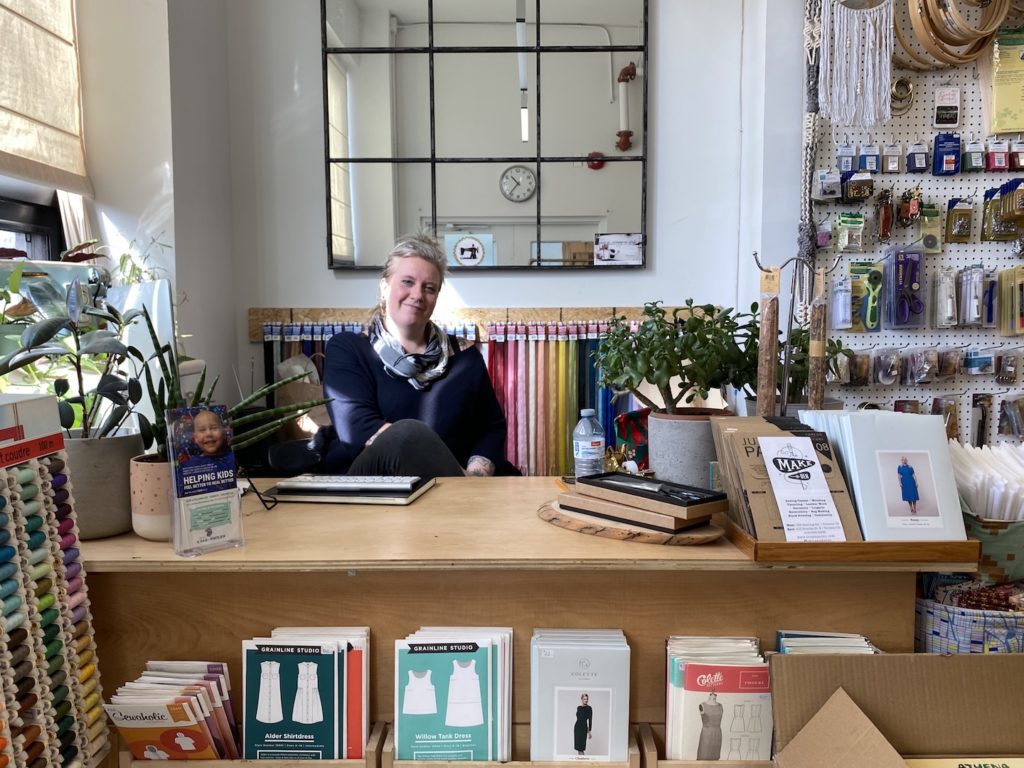
A woman with magenta hair bounces back and forth along a line of five other women. She’s showing them sewing samples. As she displays different types of pouches with drawstring ties and zippers and buttons and snap closures, she runs through the projects by week. She uses the word “fun” like most people use the word “Um”, throwing it in with the assurance that this one is even more fun than the last.
She sets up all the women on sewing machines and gives them all a piece of scrap muslin- just so they can practice getting used to the way the machine pulls at the fabric. In differing intervals and at different paces, you can hear the machines humming from anywhere in the studio. The women sew lines into the fabric and trace patterns that have been drawn on the fabric to get the hang of the appliance.
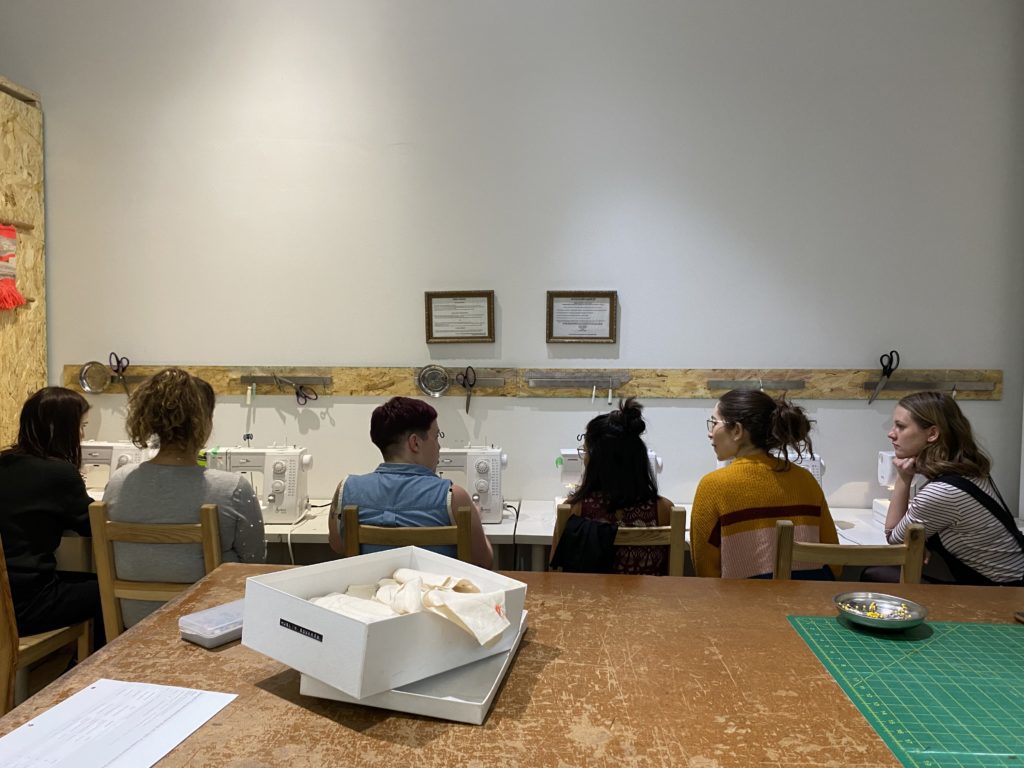
This is Fundamentals 1 (affectionately referred to as Fun One) and it’s one of the sewing classes Lauren Carter teaches at the Make Den- one of more than 30 that the studio holds. Fun One is for people who don’t have much experience with sewing, who want to learn the basics just for fun or to continue on with more courses at the Make Den.
The Make Den is a collection of teachers and students who sew anything from quilts to duffle bags, who make leather bags, shoes and even harnesses.
The Make Den began in the basement of 69 Vintage on Bloor West. Irene Stickney, the studio’s owner and head seamstress at 69 Vintage at the time, started teaching people to sew there as part of the PACT urban program.
PACT is a non-profit that connects at-risk youth ages 13 to 21 to learning programs outside the classroom to gain skills they may not have access to learning otherwise.
“It kind of turned from that into a business” says manager Darcie Smith. The studio then began holding classes outside the regular PACT program.
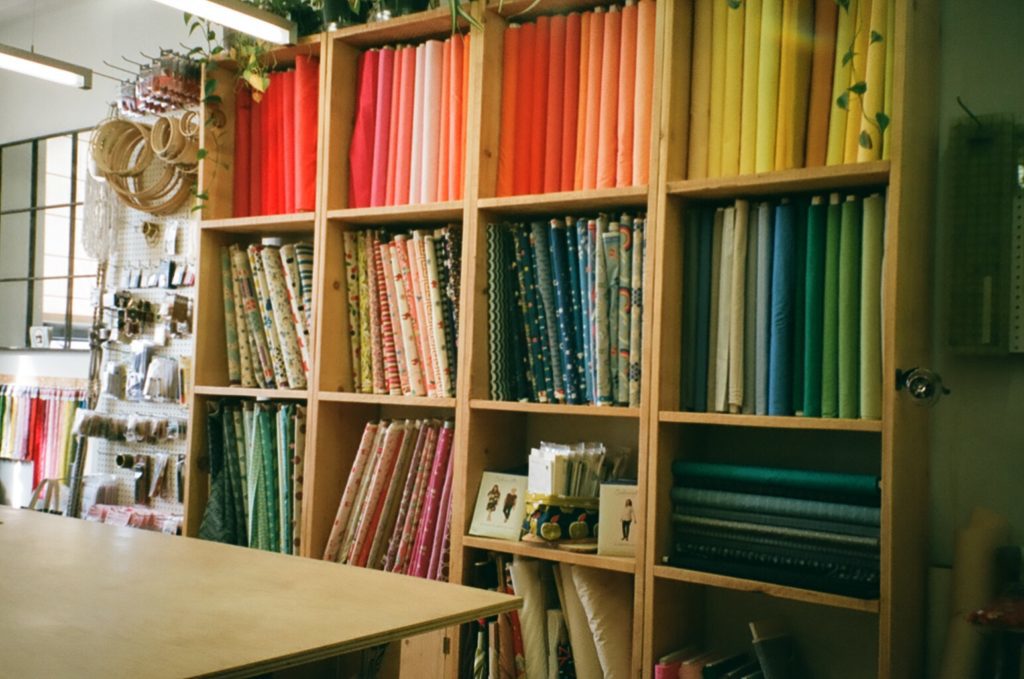
The Make Den eventually outgrew its 69 Vintage location and moved across the street into a larger location in Bloordale. It was only in May 2018 when The Make Den moved into their current space on Sterling Road. Some students have been there for every move.
“Some people will come for one four-week class and then we’ll never see them again, but…there’s people that will take every single class we have over the course of a year, or we have other students that have been coming here as long as I’ve worked here.” says Darcie.
Students vary in skill level and duration. The studio runs new Fun One classes often, and at the same time runs advanced classes such as pattern drafting. Advanced students are known to sometimes be hired on as teachers at the Make Den.
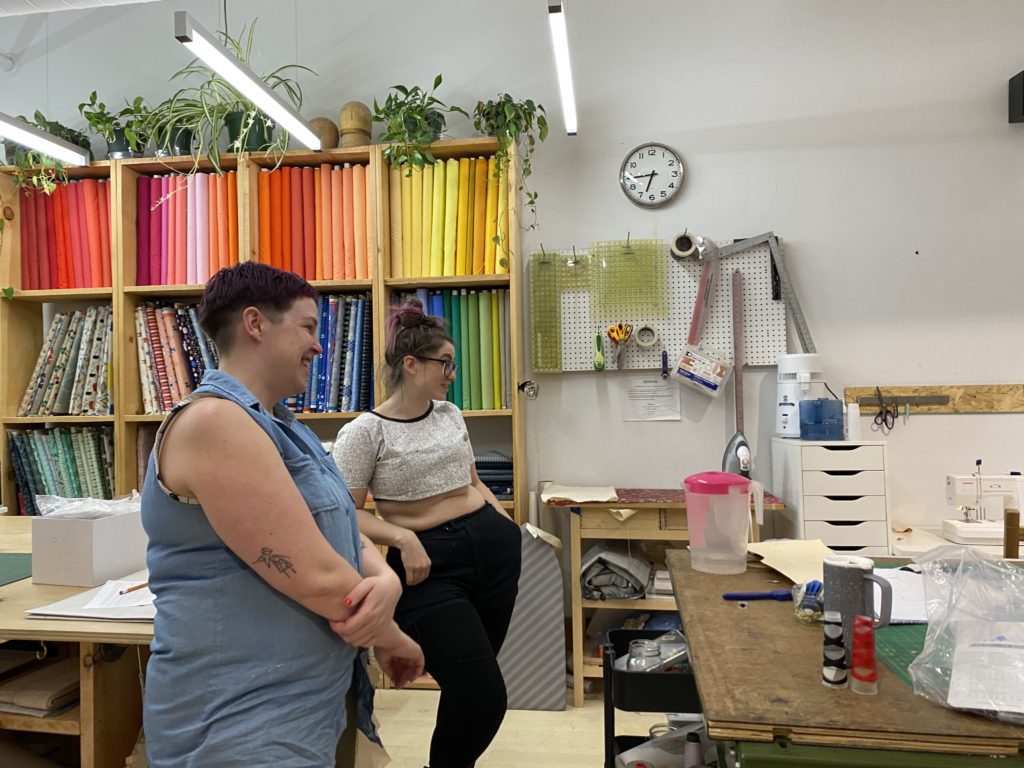
Lauren is actually one of those students. She says that she’s been sewing for six years and has been a teacher at the Make Den for two years. She says she initially asked if she could be the gardener, back in the Bloor West location, so that she could afford to keep taking classes, to which her colleagues just asked if she wanted to teach.
Lauren splits her time between the Make Den and the library, her other part time job. She teaches a couple beginner classes (“Fun One, Fun Two, Fun Three, stuff like that”) as well as quilting, which is the class that initially drew her to sewing.
Lauren bounces back and forth between her class and this conversation. She brightly reminds an apologetic student that it’s always okay to ask questions. After all, she was in their seat six years ago. Her energy floats above the class; there is room for error because there is room for learning.
She speaks very sincerely, out of character from her usual playful attitude but not her fun-loving spirit, to say how much she loves her time at the studio.
_____
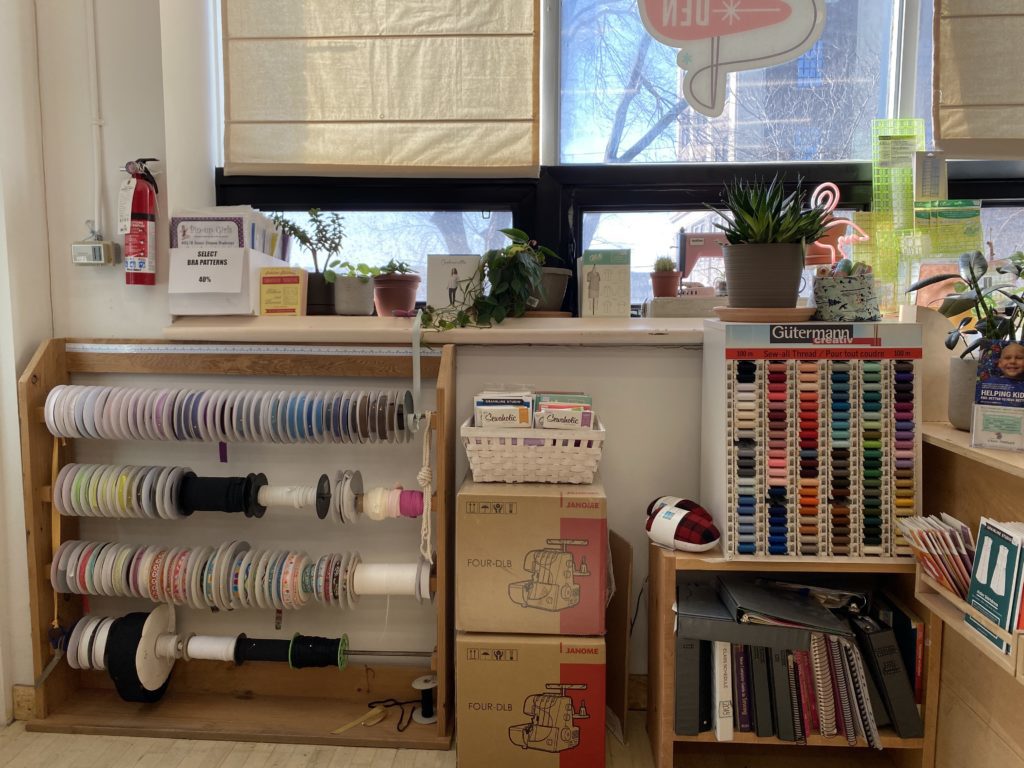
The Make Den sees all different kinds of people from “so many different walks of life” (as Darcie put it).
“You’ll be like, teaching a class and there will be like a stay-at-home mom and like an engineer and a lawyer and… everyone’s kind of working at a common goal, you know? To learn, to create,” Darcie says.
Darcie says while they still run the PACT program classes, which some attend to receive community service hours, most people come to the Make Den because they want to. She says that even if it’s one class after work a week, people just want a break from their routine sometimes.
And sometimes people want the practical skills. Darcie says this especially about mending classes, “In this day and age it’s good to learn how to mend. We’re trying to reduce, right!”.
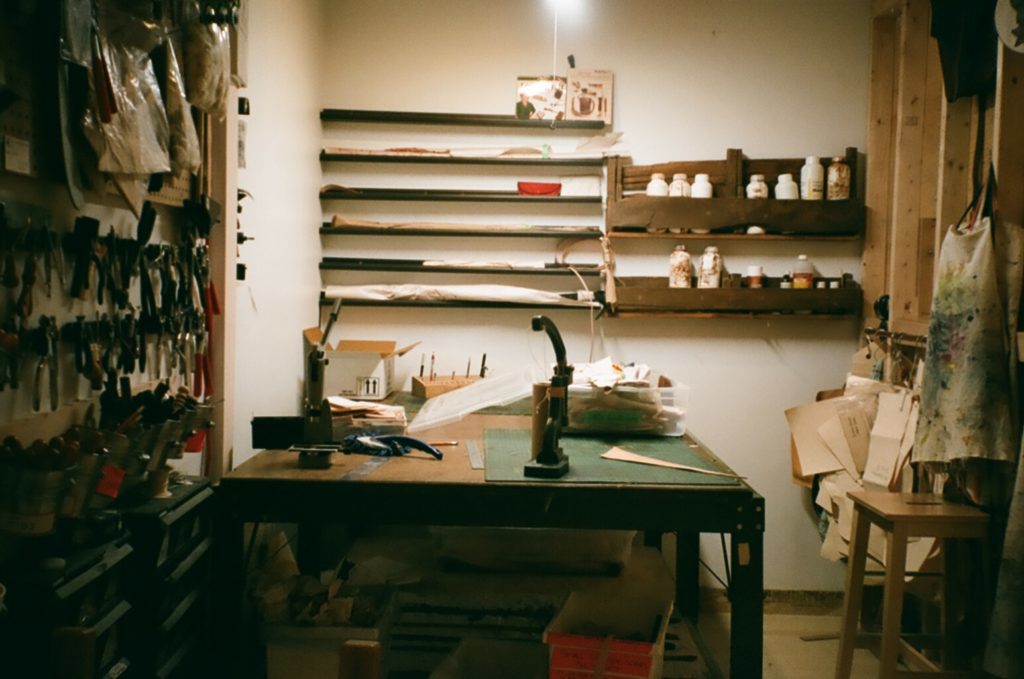
She adds that other people just want to make their own clothes. Be it a lack of well-fitting styles or being tired of the status quo of fashion or having the satisfaction of creating something you can use, it’s a practical hobby for some.
Or not so practical.
“We had some students who did drag and would come and make their costumes” Darcie says, gesturing to show that these costumes must have been larger-than-life.
____
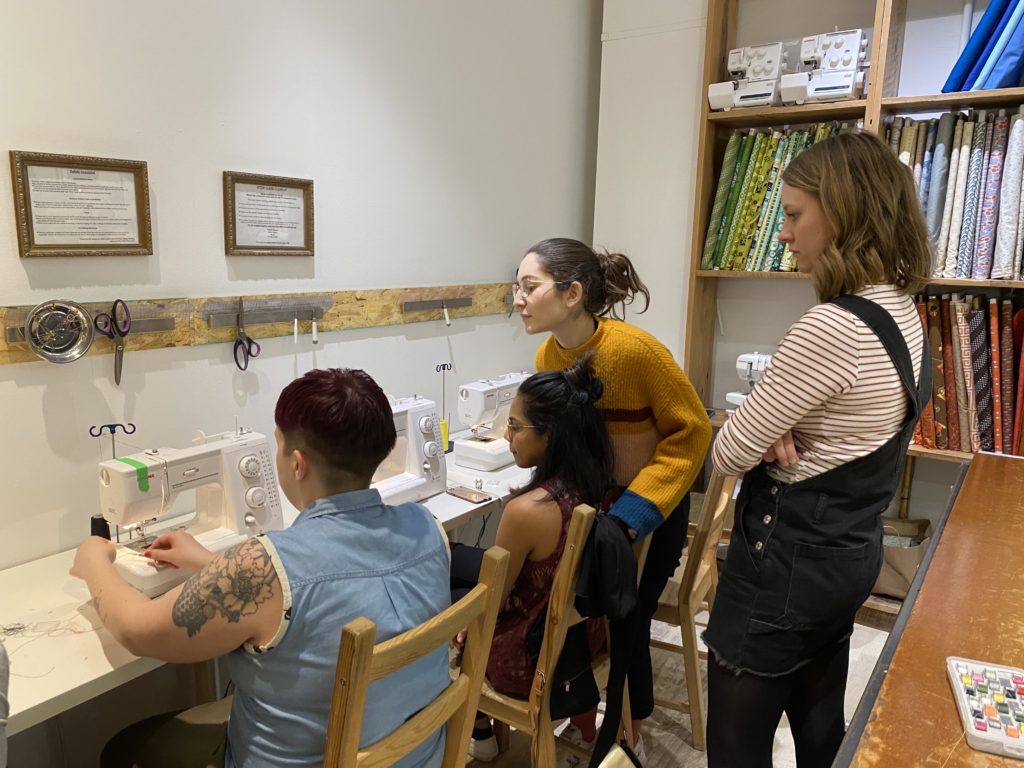
“It’s a fun environment to work in for sure,” says Darcie. With walls covered in an array of different fabrics to create from, and different work hanging around the studio, it’s not hard to imagine.
A quilted anatomical heart hangs by one of the walls of thread. A colourful example of a baby quilt full of various shapes, the kind PACT students make to donate, hangs on another.
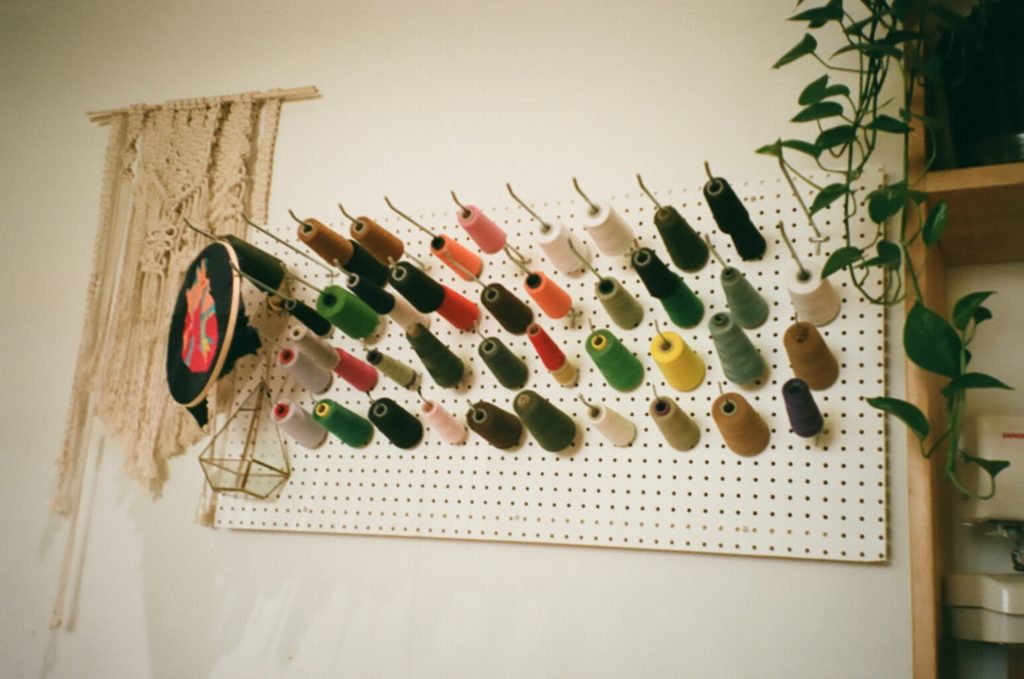
Laughter explodes from the corner of the studio where Lauren is teaching Fun One. She turns around and says to the room that one of her students has, very proudly, sewn a tube. They all have to stop sewing they’re laughing so hard. It is hard not to get drawn in to the fun. Even the girls who didn’t come with them are laughing along, no doubt beginning a friendship that will last amongst this class right until (or maybe after) their four weeks are up.
On the left side of the studio, where they’re making button-down shirts, two approximately 30-year-old women are ironing and pinning and cutting out their fabric, and lamenting about the dreaded TTC, which apparently kept a lot of people away from the studio today. Later they will sit beside each other and remind one another what it was like to be a teenager.
“I wish I was a little more wild,” laughs the one with the braided hair. Her classmate laughs in agreement, connected by the youth they agree they don’t exactly miss.
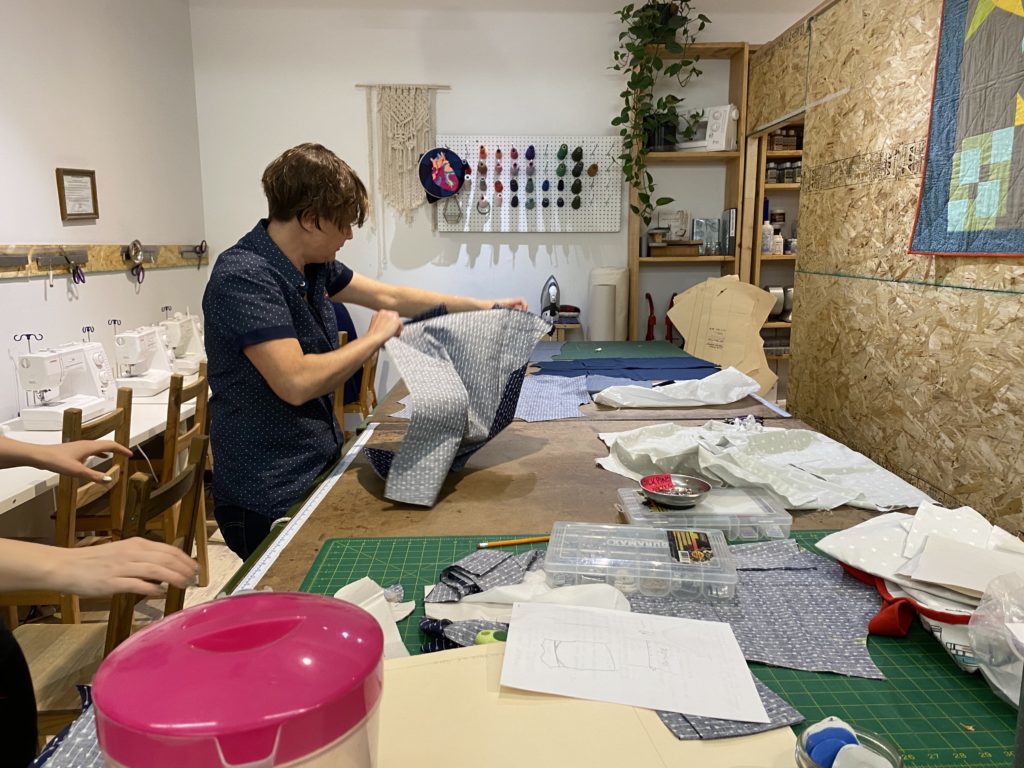
There is a sense of freedom amongst this kind of learning, the kind that most people don’t see past an elementary school art class. There is space to move, and to work with your hands, and to help pull your neighbours shirt out of itself, in a feat that Lauren observes from her own class as “magical”. So it does seem.
Their teacher, Sarita Malan, agrees, guiding them through the next step of the button-down shirt, darts in the back. There is a joy in being taught and paying attention and visible satisfaction on the outcome. Each step is a feat on its own.
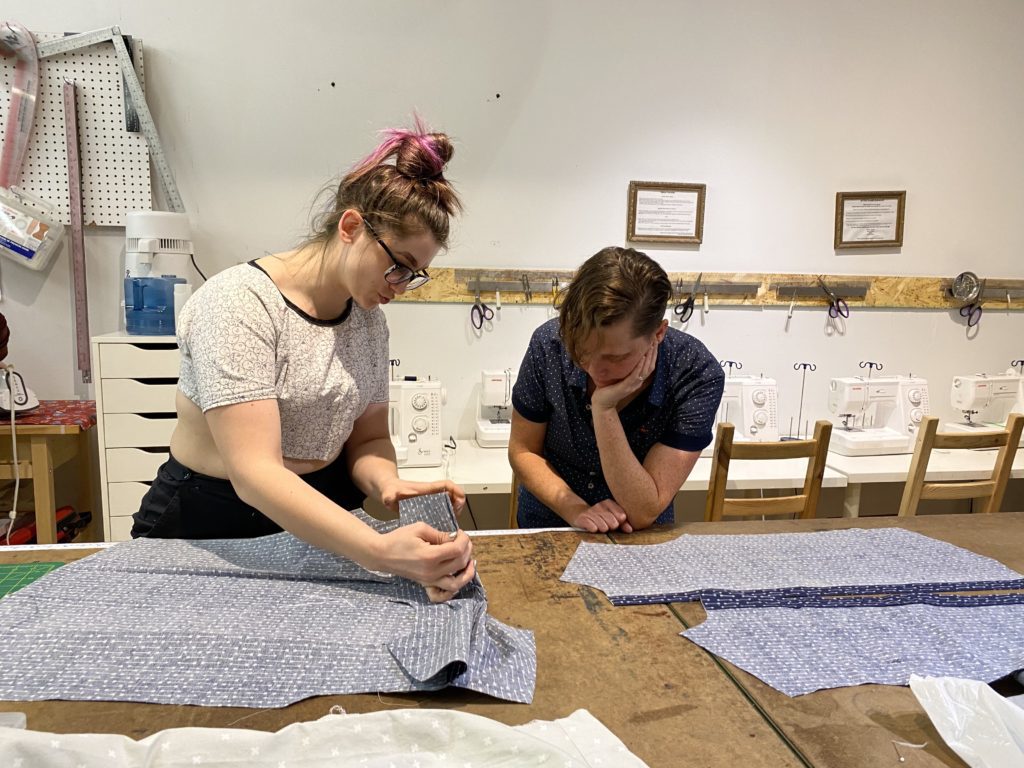
Perhaps the smaller class size today makes room for more of this kind of fun. A delay on the TTC allowed for this. Darcie does remark that they sometimes miss just being steps from the subway on Bloor West.
The studio is sandwiched between the more well-known landmark, the Museum of Contemporary Art and the smell of chocolate coming from the Nestlé factory. It’s not quite the most well known area. Darcie is sure of its potential and the Den’s people. It isn’t hard to know why.
“You know a neighbourhood’s starting to blow up when like three coffee shops open!” she says about their location on Sterling Road.
